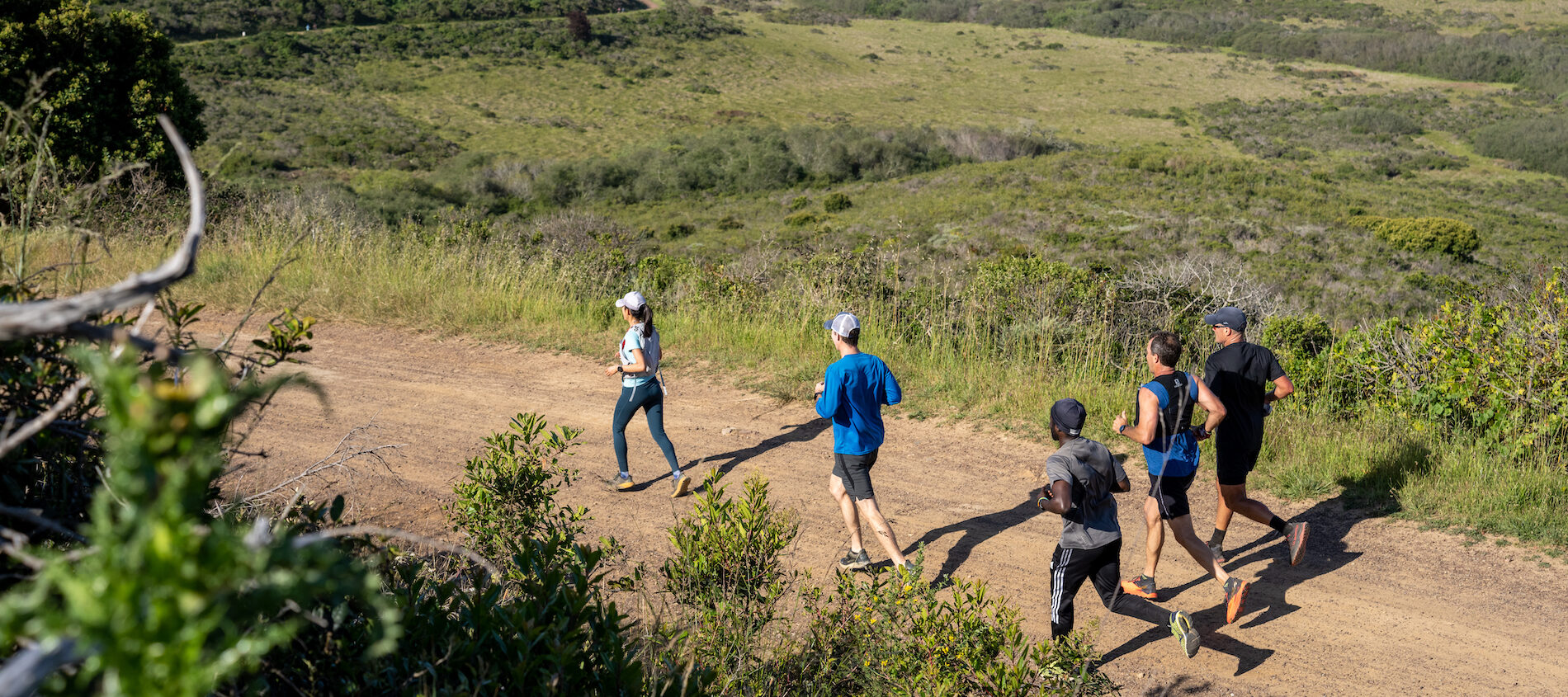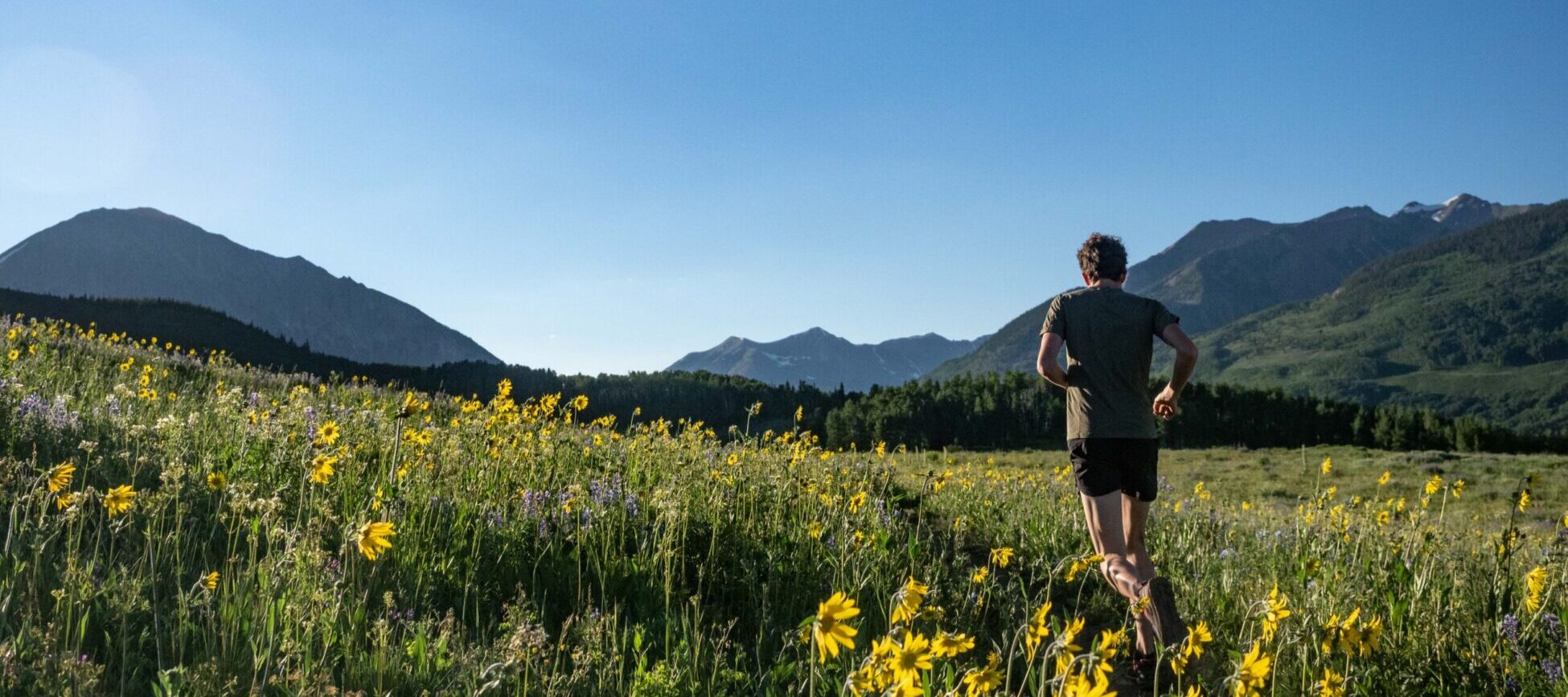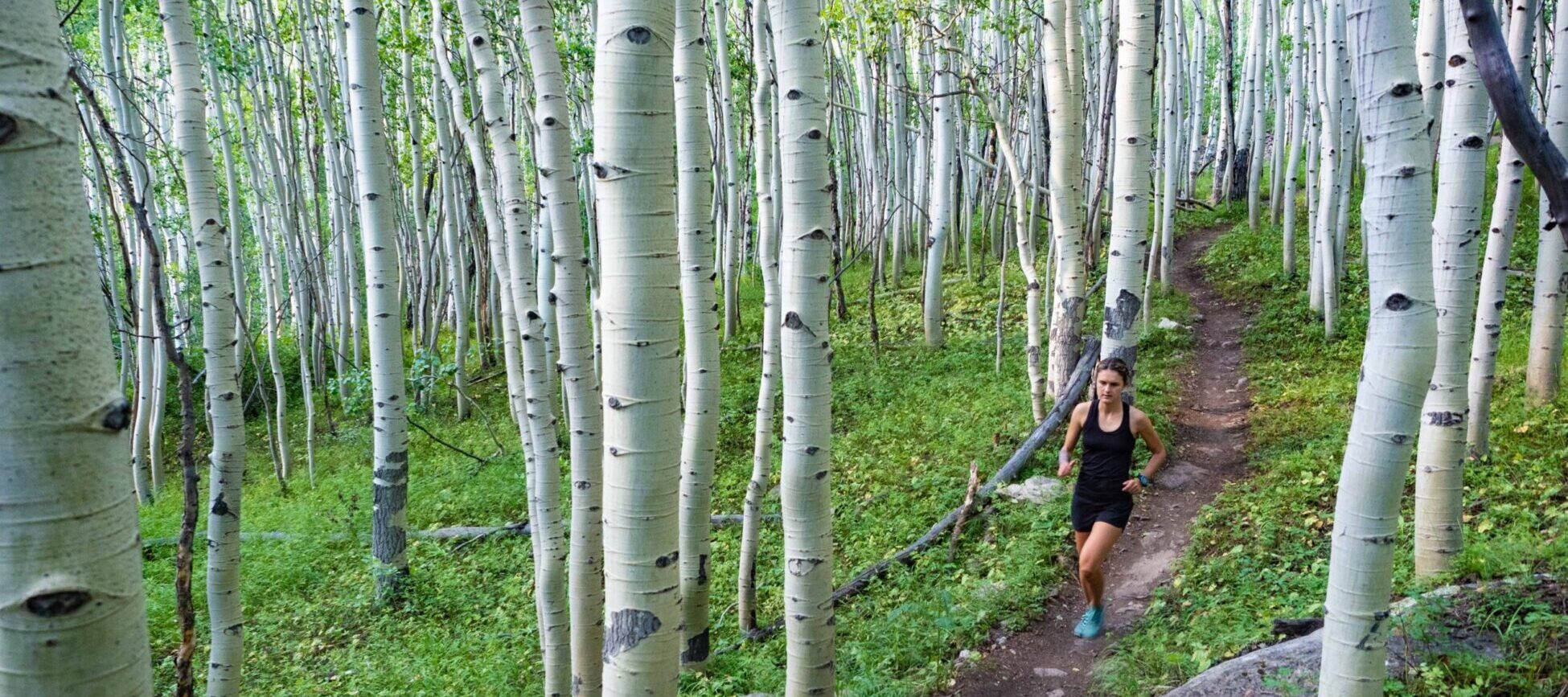
In our Trail Running 101 series, we’ll be covering just about everything you might want to know to get started in the sport, as well as tips and tricks for experienced runners to make it more enjoyable. This is the fourth part of the series, so stay tuned for more.
Intro
Odds are, if you’ve spent a few days running on trails, you’ve probably encountered something or someone that made you think, “how rude!” Maybe it was finding someone’s trash scattered thoughtlessly in a beautiful place, or another trail user blowing quickly past you without any sort of “excuse me.” Trail running is a great way to enjoy a sense of freedom in the outdoors — but like most freedoms, it comes with a bit of responsibility. The more of us who use our local trails, the greater the impact we have on each other’s experience — and on nature itself. As runners, it’s important to keep our interactions polite and our impact on the environment minimal. With all that in mind, here are nine guidelines for how to be a polite trail user.

Yield the right of way properly
Commonly, trail rules dictate that bikers yield to people on foot (hikers and runners), but everybody (runners, hikers, and bikers) yield to horses. Yielding means pulling off to the side to make room for the person or animal to pass. Of course, many trail users don’t know the rules, or simply might not care, but the more people treat each other with respect and kindness, the more enjoyable everyone’s trail experience will be.
Always maintain awareness of your surroundings
Speaking of trail experience, it’s difficult to yield properly or treat others politely if you don’t even notice them. If your headphones are blasting and you’re hyper-focused on the trail and nothing else, you might not notice, say, a person who’s been tailing you and would really like to pass. By keeping your head up and running with either one earbud or none, you’re more likely to be aware of other trail users and not block their way (not to mention potential wildlife encounters).
Pass other trail users politely
Maybe you’re actually the one who’s been tailing someone slower on a singletrack trail. How do you signal that you’d like to pass? Sure, you could shout, “on your left,” but often all it takes is a well-timed cough or sniff to alert someone to your presence. If not, a polite, “excuse me, mind if I sneak around you?” usually comes across a bit more considerate.

Stay on the trail
Pausing and pulling off to the side of the trail to allow others to pass is the only excusable time to divert your route from the established path. Why? Footsteps off trail add up over time and lead to erosion. It may be tempting to just run around big mud puddles in the middle of the trail, but this also tends to widen trails, turning what was once singletrack into an unsightly wide path. The same goes for shortcutting. It may be tempting to take the most direct way up or down an incline instead of following the switchbacks, but traffic on steep slopes ruins the integrity of existing trails over time.
Check trail conditions before you go
While we’re on the topic of erosion, it’s important to pay attention to trail conditions and know when running on a specific trail might cause excessive damage. Some more loamy types of soil can handle traffic well when it’s wet, but some — like the clay-heavy topsoils in Colorado’s Front Range, for example — can hold dried footprints for weeks or months after use. If you’re not sure about the soil in your area or etiquette about when it’s OK to run, head to a local running store and ask them — they’ll be glad to chat with you about it.
Leave no trace
You’ve probably heard this line before — at least in regard to dropping litter on the trail (don’t do that). But this principle applies to many things, from the aforementioned hardened-mud footprints to human waste. If you spend any significant time trail running, there will certainly come a time when you’ll have a digestive emergency far away from a real bathroom. Take a little time to familiarize yourself with how to dispose of your own waste properly.

Keep your dog in check
Having your canine buddy along for a run can be great for morale — but others on the trail don’t know whether your pal is friendly or not, and not everyone is fond of dogs. By following leash rules and making sure your dog is under voice command, you’ll help other trail users — including wildlife — feel more at ease. As much fun as it is for Fido to chase chipmunks, keeping your dog under control is better for the environment and the others trying to enjoy it.
Take care of yourself so others don’t have to
In part three of our Trail Running 101 series, we outlined how to trail run safely, and why doing so is important outside of concerns for one’s own health. Emergencies in the backcountry inconvenience a lot of people. Sure, we’d all like to think we’d be a good Samaritan if we came across someone hurt, lost, or unwell on the trail, but most people would rather spend their afternoon outdoors enjoying themselves as they planned, not assisting with a search and rescue operation. By preparing well for your run, packing all the proper gear, paying attention, and sticking to your plan, you can stack the odds that you won’t end up needing someone else’s help.

Give back by doing trail work
The more time you spend running off-road, the more you’ll notice the quality of the trails when you’re on them — the ones with the expertly carved switchbacks, the newly placed water bars to keep the trail from eroding into a dirt slide, etc. Those trails don’t make themselves. One of the best ways to connect with other trail runners and give back to your community is to volunteer at trail maintenance days to help build and repair the very trails you enjoy. We promise, once you’ve done some trail work, you’ll appreciate that lovely singletrack more than ever. Typically, most areas have a local trail-maintenance organization to connect with, and pretty much all of them are often looking for more volunteers.
All of this may seem like a lot of rules, but in reality, trail running etiquette is a mindset: just be considerate. Really, how great is it that we get to trail run? If we enjoy it so much, it behooves us to make sure we’re doing so in a respectful manner. So get out there, enjoy the trails — and make sure others can too.

Leave your pooch at home! Brush up on Leave No Trace. LNTIs much more an disposing of waste properly.